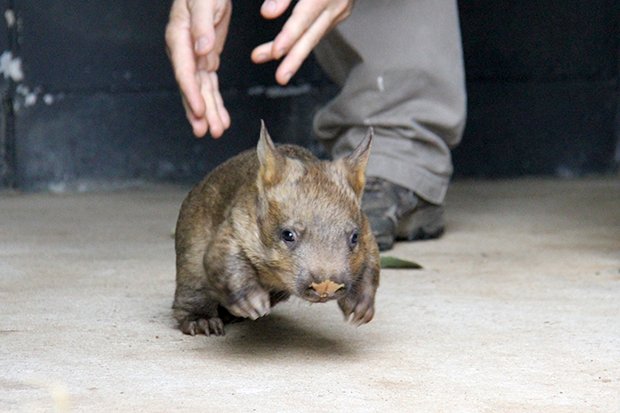Rare baby wombat introduced to public

TARONGA ZOO’S NEW baby wombat named ‘Sydney’ has made the move out of her mother’s pouch and into the wider world, where she will be seen by millions of visitors a year.
She is a rare sight according to keeper Brett Finlayson, who says southern hairy-nosed wombats are notoriously difficult to breed.
“Compatibility and timing seem to be crucial ingredients for success, as the female is only receptive to the male for a 12-hour window [each spring],” he says. “Korra and our male, Noojee, have proven to be a great pairing as this is their second joey in three years.”
Sydney announced her arrival roughly five months ago by sticking a foot out of her mother’s pouch, the first clue keepers had to her presence. At eight months, Sydney is now roughly the size of a football.
According to one of the other keepers, Paul Hare, even at her size “it’s not completely obvious if she in pouch till the mother is lying on her side or back (when asleep)”.
However, Sydney has become too unwieldy to live in the pouch and is now beginning life on the outside.

Southern hairy-nosed wombat joey at Taronga zoo. (Credit: Paul Fahy)
Southern hairy-nosed wombat baby
Young wombats, says Paul will often stay near a mother for a few years before they become independent. Sydney’s older sister, three-year-old Turra, is now independent from Korra.
The zoo’s success breeding these sometimes cantankerous natives also has implications for the critically endangered northern hairy-nosed wombat, of which there only around 200 left in the wild.
“There’s no zoo-based breeding program for northern hairy-nosed wombats at this time,” says Brett. “However, if we can perfect and apply what we learn from our breeding program here to northern hairy-nosed wombats in the future, the ramifications for this critically endangered species could be immense.”

Southern hairy-nosed wombat joey with its mother at Taronga zoo. (Credit: Paul Fahy)




